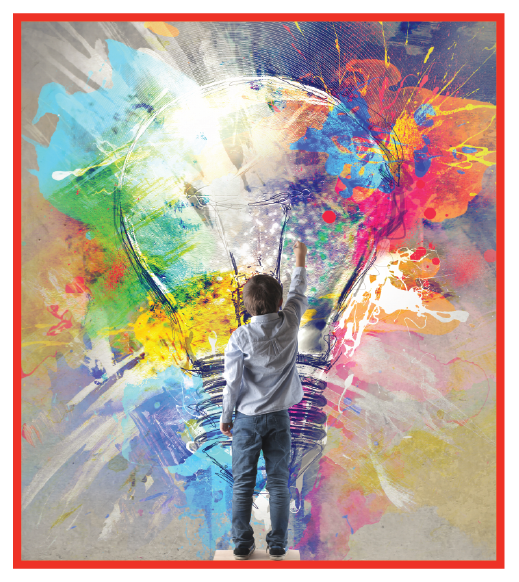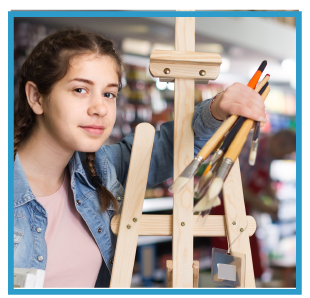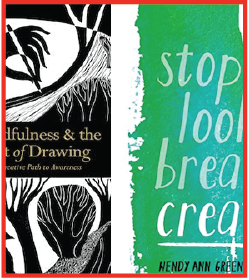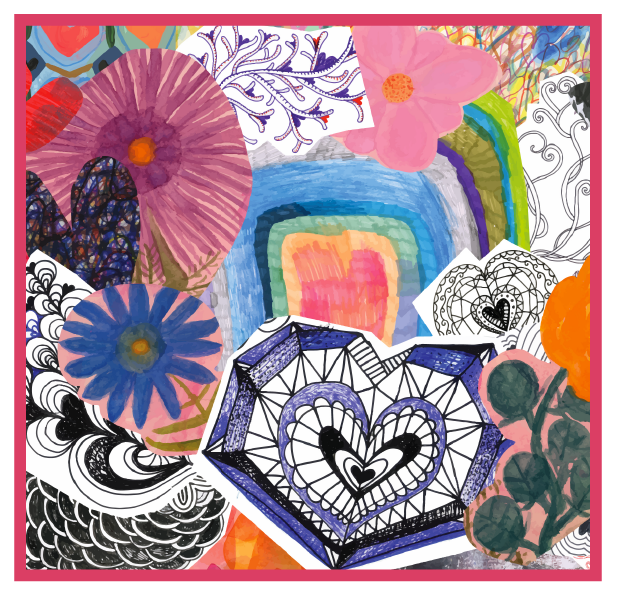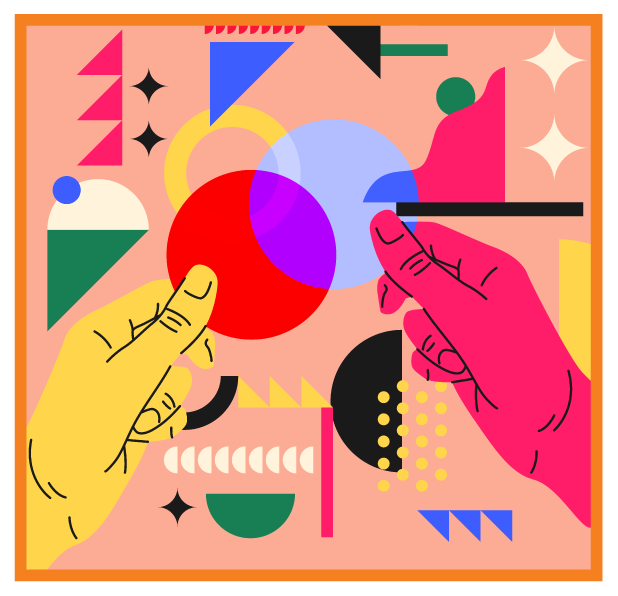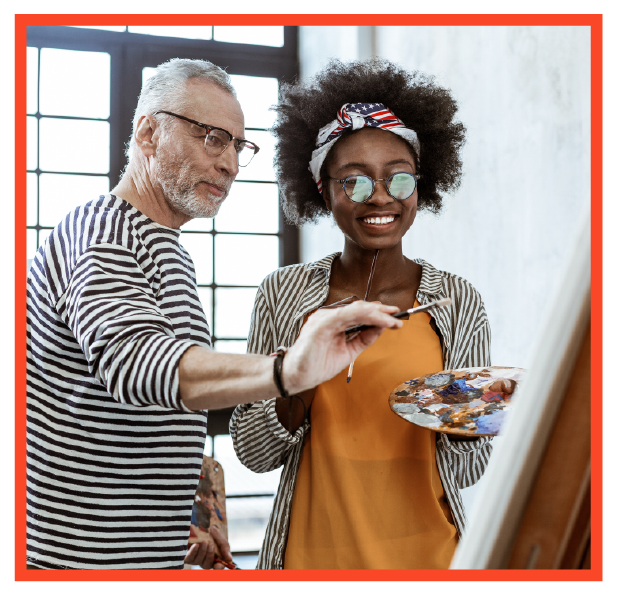
Recommended For You
Recommendations listed below are based off of your profile interest categories. For more accurate results, please update your profile.
-
Contains 2 Component(s), Includes Credits
Kick-start your back-to-school learning! This important webinar introduces Studio Thinking and the eight studio habits of mind, which describe the thinking skills and attitudes that help students learn to think authentically as artists. The Studio Thinking framework names what you already know happens in your art classroom, and grounds choice-based arts methods like TAB (Teaching for Artistic Behavior). Learn to guide your students to make decisions about what engages and challenges them personally. Walk away with tools to support authentic teaching of Studio Thinking—the skills and attitudes that help students learn and develop the internal lenses needed to think as artists.
-
Register
- Non-member - $49
- Member - Free!
- More Information
-
Register
-
Contains 2 Component(s), Includes Credits
Different teaching strategies are necessary for students with learning disabilities. However, all students can benefit from quality instruction that comes with the careful planning that goes into preparing these lessons. What does differentiated instruction actually look like for students with learning disabilities? Delve into support for the needs of students with language-based learning disabilities; processing and memory retention issues; cognitive impairments; attention deficit disorders; social/emotional challenges; and struggles with executive functioning. See concrete examples of what differentiated instruction looks like in high school digital art, photography, ceramics, and sculpture classrooms in order to connect with and meaningfully engage all learners, in a way that can be applied across grade levels and artistic media.
-
Register
- Non-member - $49
- Member - Free!
- More Information
-
Register
-
Contains 2 Component(s), Includes Credits
Join an Expressive Arts Therapist and and Art Educator for insight on how adverse childhood experiences (ACES) cause trauma. Delve into artistic processes that help discharge trauma, and gain information on how to create an environment of emotional support. Leave prepared to continue your learning after the webinar with helpful handouts and a bibliography.
-
Register
- Non-member - $49
- Member - Free!
- More Information
-
Register
-
Contains 2 Component(s), Includes Credits
Join Wendy Ann Greenhalgh, writer, artist, author, creative mindfulness teacher, and arts educator, as she leads an overview of mindfulness and related practices. Learn how to successfully apply these mindfulness techniques in your visual arts classroom.
-
Register
- Non-member - $49
- Member - Free!
- More Information
-
Register
-
Contains 2 Component(s), Includes Credits
Register for your Virtual Pass now! Access 2017 NAEA National Convention Virtual Pass programming on demand and be connected to the largest gathering of visual arts education professionals in the world—without leaving your house! Earn 6 hours of professional development.
-
Register
- Non-member - $99
- Member - Free!
- More Information
-
Register
-
Contains 2 Component(s), Includes Credits
[November 4, 2020] In a world where hatred and intolerance are alarmingly on the rise, it is imperative that we as educators continuously strive to implement empathy in our teaching practices and among our students. How might we design learning experiences to grow our students’ creative and emotional capacities in the art studio? How might we infuse empathy into our students’ creative processes? The purpose of this webinar is to reflect on the impact of empathy to create deeper learning experiences that develop emotional awareness. We will look at the benefits of engaging our students in projects that spark empathic curiosity, as well as potential problems and how to avoid them.
-
Register
- Non-member - $49
- Member - Free!
- More Information
-
Register
-
Contains 3 Component(s), Includes Credits
[August 9, 2023] Some things never change, and lesson planning is one of them, right? We learn to write lesson plans following a template as part of our teacher preparation program, and different school district norms may require minor changes to the format, but the lesson planning process is similar to how it’s always been. Or is it? More art educators are taking up the challenge of creating classroom environments to support self-directed learning by adopting pedagogies that encourage student inquiry and choice while focusing on the development of artistic behaviors. By doing so, certain questions may arise, such as: Will traditional lesson-planning methods allow for the open-endedness implied by these shifts? How might our planning reflect the much-discussed goals of culturally responsive teaching, social–emotional learning, or the promotion of a culture of belonging? How do we plan for differentiated instruction? How do we plan for assessment? What role do national, state, and district standards play in the process of lesson planning? What types kinds of planning templates best accommodate shifts in focus and pedagogy? Join us to reflect on these and other questions as presenters share experiences and examples of preK–12 lesson planning.
-
Register
- Non-member - $49
- Member - Free!
- More Information
-
Register
-
Contains 2 Component(s), Includes Credits
Teaching for Artistic Behavior is a complex curricular concept that is rewarding for both students and art educators!
-
Register
- Non-member - $49
- Member - Free!
- More Information
-
Register
-
Contains 2 Component(s), Includes Credits
How do we guide students through the processes of developing and refining their own creative ideas? Join us as we explore ideas and approaches for guided inquiry and concept mapping that are scalable for beginner or advanced-level students. Dive into the sustained investigation portion of the AP Art and Design portfolio as a lens for considering ideation as an ongoing and reflective practice that happens throughout the entire process of creating a body of work, not only at the outset.
-
Register
- Non-member - $49
- Member - Free!
- More Information
-
Register
-
Contains 2 Component(s), Includes Credits
Enhance your current visual arts lessons and studio activities by organizing them around meaningful, universal themes. Join NAEA author Marilyn Stewart as she leads this discussion on why thematic lessons are more successful and engaging for studio practice.
-
Register
- Non-member - $49
- Member - Free!
- More Information
-
Register
| Access Date | Quiz Result | Score | Actions |
|---|
